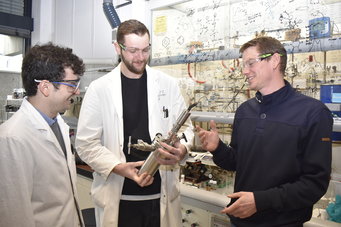Worldwide, more than 1 billion people now live in slums and informal urban settlements, with rural residents continuing to arrive at a rapid pace in search of employment opportunities in cities.
“In the Global South, a lot of the urban fabric is produced informally outside of regulatory frameworks,” explains City and Regional Planning Professor Victoria A. Beard, Director of the Cornell Mui Ho Center for Cities. “Existing planning and land use frameworks are not capable of, and in some cases not appropriate to, keeping pace with population growth and the expansion of the urban footprint. Local, city-level governments simply don’t have the fiscal resources to provide core urban services.”
Due to these pressures, informal settlement communities the world over face a number of common difficulties, including housing insecurity and inadequate access to core urban infrastructure and services such as electricity, water, and waste management systems. However, Slum Dwellers International (SDI) is supporting dynamic, grassroots change in more than 400 cities across 36 countries in Asia, Africa, and Latin America, working collaboratively to improve the lives of these residents. They are empowering them to collect data themselves (as part of the Know Your City campaign) and to use this data to advocate for the provision of site-specific services and infrastructure. To date, the outcomes of their work include upgraded homes, water and sanitation improvements, better roads and street lighting, healthier communities, and the safeguarded dignity of residents.
Planning Outside the Status Quo
Charity Mumbi Mwangi, a programs officer with SDI-Kenya (SDI-K) and current visiting scholar in residence at the Center for Cities at Cornell AAP, was initially attracted to the particular challenges of planning work in this setting while an intern with the University of Nairobi-Centre for Urban Research and Innovation, which was collaborating with Muungano wa Wanavijiji, a social movement of slum dwellers in Kenya and one of SDI’s many active affiliates.
“I got to see the power of a community that understands what it wants, and I knew instantly that that is what I want to be doing as a planner,” Mwangi says, recalling her introduction to work in an informal settlement through a learning studio project in Kitui County. She was impressed by the community involvement, which went far beyond simply ticking the obligatory planning boxes of collecting information and guiding procedures with conventional disciplinary knowledge.
Continue reading on the Architecture, Art, and Planning website.







